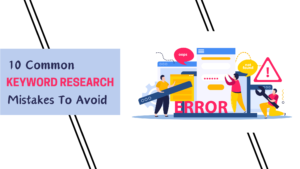Introduction Of Social Media Content Calendar
Hey there, Social media Marketer! Today, we’re diving into the heart of Digital Marketing: the social media content calendar. It’s not just a schedule; it’s your roadmap to success in the bustling world of Social Media.
Crafting a content calendar isn’t just about planning posts; it’s about creating experiences, sparking conversations, and forging connections. It’s your chance to showcase your brand’s personality while captivating your audience’s attention. So, buckle up and get ready to embark on a journey of creativity and strategy as we unveil the secrets to crafting a stellar social media content calendar. Let’s make your brand’s story unforgettable, one post at a time. Ready to dive in? Let’s How to create a social media content calendar!
Goals and Objectives:
Before diving into crafting your social media content calendar, it’s essential to outline your goals and objectives. These are the points of reference that direct your content approach. Here are key objectives to consider:
- Boost Brand Awareness: Increase visibility and recognition of your brand among your target audience.
- Drive Audience Engagement: Foster meaningful interactions and conversations with your followers.
- Generate Leads and Conversions: Prompt users to take action, such as visiting your website or signing up for your services.
- Establish Thought Leadership: Position your brand as an authority in your industry by sharing valuable insights and expertise.
- Cultivate Brand Loyalty: Build strong relationships with your audience to foster loyalty and advocacy.
- Gather Customer Insights: Use social media to understand customer preferences, behaviors, and sentiments for informed decision-making.
9 Ways to Create a Social Media Content Calendar:

Certainly! Crafting a social media content calendar involves several key steps to ensure it’s effective and resonates with your audience. Here’s a more detailed explanation of the ways to create a social media content calendar in a human-friendly tone:
- Define Your Audience and Platforms:
To start creating your social media content calendar, it’s crucial to know who your audience is and where they spend their time online. Take some time to understand the demographics, interests, and behaviors of your target audience. This will help you choose the right social media platforms to focus on. For example, if your audience consists mainly of young professionals, platforms like LinkedIn or Twitter might be more suitable, whereas if you’re targeting a younger demographic, platforms like Instagram or Facebook could be better choices. - Establish Content Themes and Categories:
Once you have a clear understanding of your audience, brainstorm different content themes and categories that align with your brand values and resonate with your audience’s interests. These themes could include educational posts, behind-the-scenes glimpses, user-generated content, promotions, or industry news. Having predefined themes will guide your content creation process and ensure variety in your posts. - Set Content Objectives and Key Performance Indicators (KPIs):
Each piece of content you create should have a specific objective tied to it. Whether your goal is to drive website traffic, increase brand awareness, or boost engagement, clearly define what success looks like for each post. Identify key performance indicators (KPIs) such as likes, shares, comments, click-through rates, or conversions that you’ll use to measure the effectiveness of your content. - Create a Content Calendar Template:
Choose a format for your content calendar that suits your team’s workflow and allows for easy organization and scheduling. You can use tools like Google Sheets, Microsoft Excel, or project management software to create your calendar. Include columns for dates, content topics, captions, links, images, and any other relevant details. Having a structured template will make it easier to plan and manage your content effectively. - Plan Content Cadence and Frequency:
Determine how often you’ll post on each social media platform and establish a consistent posting schedule. Consider factors such as peak engagement times, audience behavior, and platform algorithms when deciding on your posting frequency. Aim for a balance between staying active and not overwhelming your audience with too much content. - Curate and Create Content in Advance:
Allocate time to brainstorm ideas, curate relevant content, and create original posts well in advance of their scheduled publish dates. This allows you to maintain a steady flow of content without feeling rushed or stressed about last-minute deadlines. Consider repurposing evergreen content or user-generated content to supplement your original posts and keep your feed fresh and engaging. - Schedule and Automate Content Publishing:
Take advantage of social media management tools like Buffer, Hootsuite, or Sprout Social to schedule and automate the publishing of your content across multiple platforms. Schedule posts ahead of time based on your content calendar, and leverage features like post scheduling, queueing, and bulk uploading to streamline your workflow. Automation helps you stay consistent and frees up time for other marketing activities. - Monitor and Analyze Performance:
Regularly monitor the performance of your social media content using built-in analytics tools provided by each platform. Track key metrics such as reach, engagement, follower growth, and conversions to gauge the effectiveness of your content strategy. Pay attention to trends, patterns, and audience feedback to identify what’s working well and what needs improvement. - Iterate and Optimize:
Based on your performance data and insights, continuously iterate and optimize your social media content calendar. Experiment with different types of content, posting times, messaging strategies, and visuals to see what resonates best with your audience. Be open to feedback and willing to adapt your approach based on what you learn along the way.
Conclusion:
Creating a social media content calendar is an essential component of any successful digital marketing strategy. By planning and organizing your content in advance, you can maintain consistency, relevance, and effectiveness across your social media channels. Follow the steps outlined in this guide to create a social media content calendar that aligns with your goals, resonates with your audience, and drives meaningful results for your business. Embrace the power of strategic planning and thoughtful execution to elevate your social media presence and achieve your marketing objectives.











